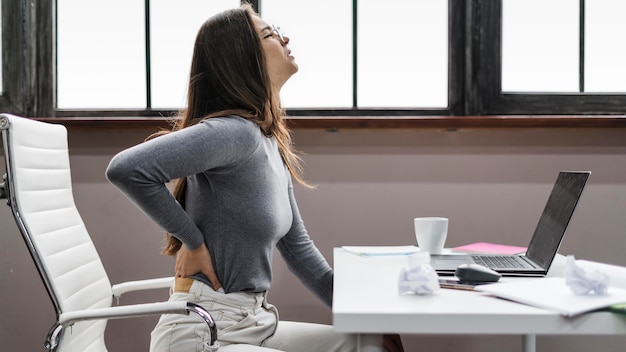
Hip Trochanteric Bursitis is one of the most common reasons for hip pain. This condition affects both the active and inactive individuals but the condition is more common among middle-aged women or females.
What do we mean by Hip Trochanteric Bursitis?
Hip Trochanteric Bursitis occurs when the bursa that covers the bony point of hip bone (greater trochanter) becomes irritated or inflamed. This is the most commonly inflamed bursa of the hip joint.
What are the causes of Hip Trochanteric Bursitis?
Hip Trochanteric Bursitis occurs due to the combination several factors including:
-
Repetitive stress-injuries resulting from running, bicycling or standing for long hours.
-
Spine diseases like; scoliosis or arthritis of the lumbar spine
-
Inequality in leg-length
-
Rheumatoid Arthritis
-
Previous hip surgery or prosthetic implants in the hip
-
Deficiency of Calcium
-
Bone spurs or development of calcium deposits within the tendons
-
Hip muscle tightness or weakness
-
Abnormal hip or knee structure
-
Poor hip or knee mechanics
What are potential symptoms of Hip Trochanteric Bursitis?
The patients suffering from Hip Trochanteric Bursitis may experiences one or more of the following symptoms:
-
Pain and swelling at the affected side of the hip
-
Tenderness on the outside of hip
-
Pain while lying on the affected side
-
Sharp Pain in the hip that changes into a dull ache and travels down the side of leg
-
Pain & stiffness while sitting or walking for prolonged periods
-
Pain while climbing stairs or sitting with legs crossed
How can Physical Therapy help to treat Hip Trochanteric Bursitis?
Physical Therapists typically suggest or prescribe the combination of stretching and strengthening activities to treat the condition and as well to eliminate the pain. Following treatments or strategies may be adopted by your physical therapist to achieve the specific goal:
-
Ice therapy may be used to reduce the inflammation of bursa
-
Electrotherapy or deep-tissue massage techniques may be used to reduce pain & irritation.
-
Range of motion exercises are prescribed to restore normal mobility to the back, hip and knee
-
In order to decrease muscular tension, stretching techniques may be applied to the lower body.
-
Hand-on treatments may be used to move your muscles and joints in order to improve their strength & motion
-
Strengthening exercises may be applied to eliminate excessive strain at the trochanter.
-
Your Physical therapist may develop a safe and customized progressive resistance program to strengthen your lower extremity
-
Functional training may be provided to help you to safely transit back to your normal or routine activities
-
Patient education will be provided in order to eliminate the risk of re-injury. You will be educated about safer & controlled body movements
Contact Alliance Physical Therapy for the state-of-art and efficient treatment of any of your musculoskeletal problems or diseases. Our professional and diligent Physical Therapists use patient-proven methods and top-notch techniques to treat your problems and help you to get back to your work as early as possible.






